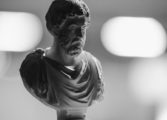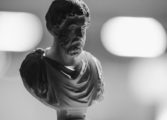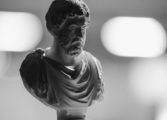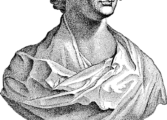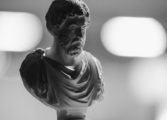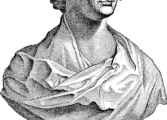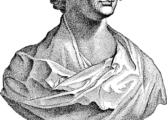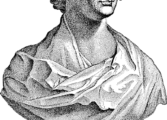The Raven: Edgar Allan Poes Haunting Masterpiece

Introduction
“The Raven” by Edgar Allan Poe is one of the most well-known and revered works in American literature. Its dark and eerie atmosphere, coupled with its powerful use of symbolism, has captivated readers for generations. In this article, we will delve into the depths of this haunting masterpiece, discussing its significance and exploring its historical development over time.
The Raven: An Overview

“The Raven” is a narrative poem that tells the story of an unnamed narrator who is visited by a talking raven. The poem is structured in eighteen stanzas, each consisting of six lines and following a consistent meter and rhyme scheme. The raven’s repetitive response of “Nevermore” to the narrator’s questions forms the central motif of the poem.
At its core, “The Raven” delves into themes of grief, loss, and the fragility of the human mind. Poe masterfully portrays the descent into madness as the narrator grapples with the reality of his loss and the unsettling presence of the raven. The poem’s dark and brooding tone, coupled with its vivid imagery, creates an atmosphere of both terror and fascination.
Historical Development
of “The Raven”
“The Raven” was first published in 1845 in the New York Evening Mirror. Its immediate success propelled Poe into the national spotlight as a prominent poet. The poem’s popularity owes much to its exploration of universal themes, making it relatable to readers across different generations.
Over the years, “The Raven” has become one of Poe’s most celebrated works and an iconic piece of American literature. It has inspired numerous adaptations in various art forms, including films, music, and even visual arts. Its influence on subsequent generations of writers cannot be overstated.
Key Elements and Interpretations
1. Symbolism: Central to “The Raven” is the symbolic presence of the raven itself. The consistently repeated word “Nevermore” takes on various interpretations, representing both the narrator’s inability to move on from his loss and the inevitability of death.
2. Gothic Atmosphere: Poe’s masterful use of imagery and language creates a deeply unsettling and gothic atmosphere throughout the poem. The use of phrases such as “And the silken, sad, uncertain rustling of each purple curtain” adds to the sense of foreboding and mystery.
3. Psychological Study: “The Raven” offers readers a glimpse into the narrator’s deteriorating mental state. As he engages in conversation with the raven, his mental turmoil becomes increasingly evident, ultimately leading to his descent into madness.
4. Universal Themes: Though “The Raven” is often associated with grief and loss, its themes extend beyond these emotions. It speaks to the universal human condition, exploring themes of isolation, obsession, and the irrational fears that plague the human mind.
“The Raven” as a Featured Snippet
To enhance the chances of this article appearing as a featured snippet on a Google search, it is imperative to provide a clear and well-structured format. Below is an outline to optimize the article:
The Raven: Edgar Allan Poe’s Haunting Masterpiece
Introduction
– Briefly discuss the significance and popularity of “The Raven.”
Overview of “The Raven”
– Explain the premise, structure, and central motifs of the poem.
Historical Development
– Explore the initial publication, its impact on Poe’s career, and subsequent adaptations.
Key Elements and Interpretations
– Dedicate separate sections to symbolism, gothic atmosphere, psychological study, and universal themes.
Conclusion
– Summarize the lasting impact and importance of “The Raven” in the realm of literature.
Conclusion
“The Raven” by Edgar Allan Poe remains a haunting and timeless masterpiece, captivating readers with its dark atmosphere and profound exploration of the human psyche. Its influence on literature, art, and popular culture continues to resonate, making it an essential work for art enthusiasts and collectors. As we unravel the layers of symbolism and delve into its historical context, “The Raven” unveils itself as a work that speaks to the frailties and depths of the human condition.









